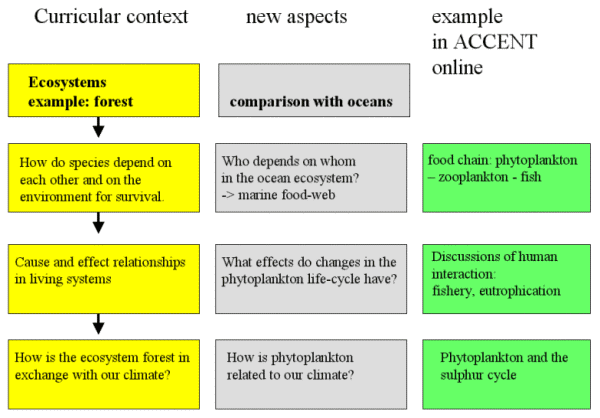 > ACCENT en > Nr 5 Jan. 2006 oceanic sulfur > I: Information for teachers
> ACCENT en > Nr 5 Jan. 2006 oceanic sulfur > I: Information for teachers
|
Information for teachers |
|
Solutions and material: Download material and solutions are offered in the ACCENT material corner for this edition. Context and application This magazine makes a link between the Earth sciences and life sciences curriculum. Ecosystems in our neighbourhood are usually discussed in life science (biology) in the field of fundamentals of ecology and lthe living environments. A typcial example would be forests. Marine plants are usually hardly mentioned in this context even though the oceans covering 71% of the Earth's surface. We recommend using the material provided for a direct comparison of forest and phytoplankton (see also worksheet) and their respective role in the food chains on land and in the sea as well as for a comparison of the respective exchange with the atmosphere and the interlinks with the climate system. One lesson + homework should be sufficient for this topic. What are students expected to learn? The pupils should not learn all details about interactions in the oceanic ecosystem, but become aware that comparable pattern of food-webs and exchange between plant life and atmosphere on land and in the sea exist:
|
 |
|
|
